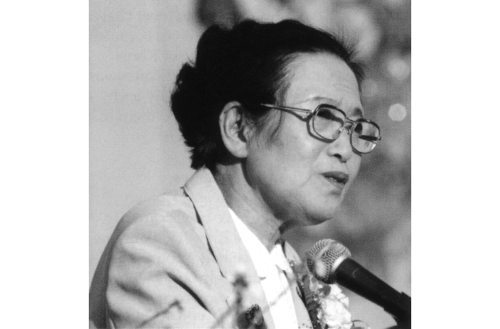How does the Unificationist understand the resurrection of Jesus?
Firstly, the Divine Principle strongly affirms the reality of the resurrection for three reasons.
Historically, the resurrection was necessary for the disciples to recover from the demoralizing tragedy of the crucifixion.
As the British Biblical theologian Alan Richardson has said, Jesus' mission ended in total failure and disaster. Therefore, all his disciples fled back to Galilee (Mk. 14:50).
However, when these discouraged followers began to be convinced that Jesus was risen, their faith suddenly revived. They came together again and henceforth celebrated Jesus' death as an occasion of joy and Thanksgiving. 92
Historically, the first Christians' experience of the risen Jesus reasonably explains their radical change of mood from despair to radiant hope.
Theologically, the resurrection is important as a testimony to the bipolar nature of man. Every person consists of mortal flesh and an immortal soul.
The enemies of Jesus could not destroy his spirit by condemning him as a blasphemer and heretic. Nor were the resurrection appearances simply invented by the early church to delude a credulous people into accepting a new faith. Jesus was truly victorious over death.
Furthermore, providentially, the resurrection was most necessary. Since Jesus' mission was God's way to carry out His original ideal of creation, He had to overcome the awful setback to His plan caused by the rejection of His son.
How could God revitalize the dispersed and seemingly discredited messianic movement and use it to further His primary intention for man?
The reappearance of Jesus Christ was God's way of reinspiring the disciples and re-igniting their enthusiasm. The entire Christian community was prepared to receive the outpouring of the Spirit at Pentecost.
Because of the resurrection, Jewish Christians could preach to their countrymen: "This Jesus God has raised, as we are all witnesses ... Therefore let the house of Israel recognize that same Jesus whom you crucified, God has made both Lord and Christ" (Acts 2:32, 36).
Next, we must look at the Divine Principle's interpretation of the manner of resurrection.
Like most liberal Protestants, Unificationists believe that Jesus' resurrection was spiritual and not physical. A resurrection of the flesh contradicts our modern scientific worldview.

Bultmann, among others, would insist that if we are to make Christianity credible, we have to demythologize ancient doctrines like Jesus' fleshly resurrection and physical ascension to heaven. Brunner likewise insists upon the resurrection of the body, yes, but the resurrection of the flesh, no! 93
Paul, possibly the only well-educated member of the apostolic community, suggests that one need not believe in Jesus' corporeal resurrection.
In the early Pauline epistles, the Christian hope is largely interpreted in terms of Jewish apocalypticism, which includes belief in a physical resurrection (I Thess. chaps. 4 and 5).
Later, Paul modified his views: "Flesh and blood cannot inherit the kingdom of God" (I Cor. 15:50).
Paul's experience of the risen Jesus was an encounter with the glorified Christ, a spiritual reality.
There is also evidence in the Gospels that Jesus' resurrected body was very different from his earthly one. When Jesus suddenly appeared to the disciples in their guest chamber, they thought they saw his ghost (Lk. 24:37).
Similarly, the disciples who met the risen Jesus on the road to Emmaus did not recognize him until he ate with them, and as soon as their eyes were opened, he immediately vanished (Lk. 24 15 31). These two incidents show that the body of the risen Jesus was quite unlike his earthly one.
Yet, all four Gospels contain stories of the empty tomb. Do these not imply that Jesus was bodily resurrected? Those who insist upon the physical resurrection rely heavily on the empty-tomb tradition.
Many New Testament scholars consider the empty tomb a legend. As one example, let's look at the study made by Guignebert: 94
He says that the New Testament sources are "a mosaic artificially composed of contradictory fragments." 95
Firstly, the Gospels present contradictory evidence about the 96burial of Jesus and the discovery of the open tomb. Matthew, Luke, Ac, and John add details to Mark's original account, but they contradict one another in significant ways. Four examples should suffice.

How many women go to Jesus' tomb and find it empty?
One, according to John (20:1). Two, according to Matthew (28:1). Three, according to Mark (16:1). Three women plus other disciples, according to Luke (24:10).
Who embalmed Jesus' body?
Joseph and Nicodemus, says the Fourth Gospel (19:38-40). But according to the Synoptic tradition, the women go to the tomb for that purpose (Lk. 24:1).
Was the tomb guarded?
Matthew relates that the chief priests and elders stationed soldiers at the sepulchre. But Mark and Luke lack this important detail.
What happened when the women came to the sepulchre?
Matthew alone records a great earthquake taking place (28:1-10). If this startling event occurred, why did the other evangelists not note the fact? From these discrepancies, one must conclude that Mark's original story was greatly embellished by the later evangelists.
Fortunately, we can find an important tradition about the risen Jesus in Paul's letters, which is twenty years closer to Jesus' earthly ministry (I Cor. 15:3ff.).
Paul relates two very significant facts: a list of resurrection appearances which he claims to have received from the original apostolic community, and each appearance was like his own mystical experience on the Damascus road. That means the first resurrection appearances were of the spiritual Jesus.
More importantly, Paul nowhere refers to the empty tomb. Doesn't this suggest that in his time, twenty years before Mark-Christians did not believe that Jesus' tomb was found empty?
Guignebert and others, therefore, conclude that the tomb stories were later legends added by Christian apologists to demonstrate the reality of Jesus' resurrection. Harnack, for example, maintained that the "discovery" of the open tomb complicated and confused the tradition and that Paul knew nothing of the story. 97
Jesus died on the cross and was buried. Is that all we can know? Guignebert believes that Jesus' body was taken from the cross by his executioners and given some sort of burial. Most likely, the body was tossed into a pit set aside for executed criminals. 98
If Jesus' sepulchre had been known, there would have been regular pilgrimages to the place. But the site of the Holy Sepulchre was not located until Constantine's time when he made it "available for veneration" in 326 A. D. 99
In any case, the Easter faith was based on the various appearances of the risen Jesus and not on an empty tomb. 100
Von Campenhausen, the Heidelberg church historian, is one of the most recent defenders of the historicity of the open tomb. 101 Yet, he does not try to use this as proof for Jesus' physical resurrection.
Why was the tomb empty?
We do not know, von Campenhausen admits. In any case, various explanations have been offered. Two ancient Jewish opinions have survived. The tomb was empty because the disciples secretly removed the body before the women arrived. 102
Or the gardener removed it because he was afraid the grave of a controversial prophet would attract so many visitors that they would trample upon his vegetables. 103
Another possibility is that Joseph of Arimathea had second thoughts about having the corpse of a condemned criminal in his family tomb and so moved the body without notifying the disciples. 104
Possibly, the tomb was broken into and pillaged by grave robbers, who were plentiful in those days.
Or maybe Jesus was removed from the cross before death. This strange idea takes three forms. Docetic Christians believed that since Jesus was divine, he could not suffer and die.
Hence, he only appeared to be crucified, or someone took his place on the cross, for example, Simon of Cyrene. 105
This view was ancient and spread to Arabia, where Muhammad seems to have believed it. 106
A second view is that Jesus was an Essene who was given a drug which enabled him to feign death. His fellow Essenes took him from the cross and hid him in one of their monasteries, where he lived secretly until his natural death many years later. 107
The third opinion, also held by some Muslims, is that Jesus did not die on the cross, was gradually restored to health, and then traveled to India, where he was revered as a prophet until his death at an advanced age. Even today, many Indian Muslims can show the Kashmir shrine in which the body of the saintly Jesus still rests. 108
It may seem that we have spent too long on the problem of the empty tomb.
However, if we insist upon the spiritual nature of the resurrection, then inevitably we will be asked why the grave of Jesus was said to be empty.
For this reason, we were forced to examine in detail the ancient legends and contemporary views. It should now be obvious that the empty tomb stories do not prove the physical resurrection of Jesus.
According to Unification theology, the disciples did not see an ordinary ghost. What they experienced was the Messiah who had risen above the shame of a blasphemer's condemnation and a criminal's death.
Thus, Unificationists claim that because of the resurrection, Jesus' mission did not fail. Certainly, Jesus' physical body was completely crushed. But his sense of mission remained unshaken.
When he awoke in the spirit world, Jesus' first concern was to resurrect the faith of his disciples, so he was eager to manifest himself to them in some visible way. This is why Luke wrote that for forty days Jesus remained near his disciples.
Because of Jesus' unfailing faith and based on his forty-day foundation, God could begin a new dispensation using the disciples as instruments of His will for man's redemption. 109
92 A. Richardson, An Introduction to the Theology of the New Testament (1958), P. 190.
93 E. Brunner, Dogmatics, vol. 11, p. 372.
94 C. Guignebert, Jesus (1956), pp. 490-536.
95 Ibid., p. 490.
96 Mk. 15:42-47; Matt. 27: 57-61; Lk. 23:50-56; Jn. 19:38-42; Acts 13:29.
97 A. Hamack, New Investigations of Apostolic History (1911), p. 112. Also H. Conzelmann, Outline of Theology of the New Testament (1969), p. 67.
98 Guignebert, op. cit., p. 500.
99 Eusebius, Life of Constantine 3:26 and Socrates' Ecclesiastical History 1 17.
100 E. Brunner concludes that the original testimony to the resurrection did not contain any reference to the empty tomb but was solely concerned with the appearances of the risen Christ (Dogmatics, vol. 11, p. 368).
101 H. von Campenhausen, "The Events of Easter and the Empty Tomb," Tradition and Life in the Church (1968), pp. 42-89.
102 Also, the view of the German Biblical critic Heinrich Holtzmann (d. 1910), but a view indirectly contested by Matthew's Gospel.
103 A Jewish view attacked by Tertullian.
104 J. Klausner conjectures that Joseph of Arimathea secretly removed Jesus' body and buried it in an unknown grave (Jesus of Nazareth, 1925, p. 357).
105 The Gnostic Christian Basilides taught this, according to Irenaeus.
106 Cf. G. Parrinder, Jesus in the Qur'an (1977), pp. 108-113.
107 The trouble with this view is that Jesus' teachings and lifestyle are so unlike Essene asceticism that he would hardly be accepted by them.
108 Cf. H. A. R. Gibb and J. H. Kramers, eds., Shorter Encyclopedia of Islam (1953), p. 24.
109 Divine Principle (1973), p. 148.





